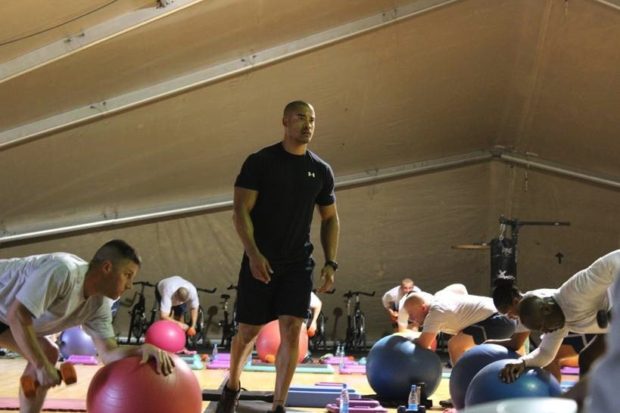
“The military life is one of structure and routine. The absence of being told where to be and what to do is probably one of the hardest things to get used to during the transition from active duty to civilian life.”
For active duty service members’ fitness plays a critical role in being able to do the job to the best of one’s ability, whether you are a Special Forces operator or a logistical staff member. But what about for veterans and the challenges faced during the transition from active duty to civilian life? HOMELAND recently caught up with Tee Major to talk about the role fitness can play in the transition from active duty to civilian life, fitness tips for veterans and his Militant Athletes Extreme Physical Training (MAX PT) program. MAX PT is a military-inspired workout that is tough enough for the military athlete but also doable for anyone looking to kick start a new fitness routine. The program was created and developed for U.S. and Coalition Armed Forces that combines strength, cardio and core movements into intense 6-minute circuits.
Major is the founder of TeeMajor.com, the creator of MAX PT and a FITFUSION.com trainer. He is also a long-time Military Fitness Trainer for the Army, Air Force, Marines, Navy and Coalition Forces and served as a civilian fitness trainer during Operation Iraqi Freedom and Operation Enduring Freedom and spent eight months as a personal and group trainer for the U.S. Navy on Coronado Island on the North Island Base.
HOMELAND: How has your work with the military influenced your fitness programming and guiding principles?
TM: Every military branch has a creed and is something the soldiers within each branch live and die by every day. Each creed consists of several core values such as discipline, physical and mental toughness, proficiency in tasks and drills, which resonated with me and helped shape the way I train and live my everyday life. Armed service members have job requirements, one of which is to stay physically fit even if deployed in austere conditions. They should be able to train with little equipment, little time, and small spaces if necessary. So my workouts are quick, efficient, task oriented and develop mental and physical toughness.
HOMELAND: How can fitness, and your approach to fitness, help service members with the transition from active duty to civilian life?
TM: The military life is one of structure and routine. The absence of being told where to be and what to do is probably one of the hardest things to get used to during the transition from active duty to civilian life. Establishing a daily fitness routine will help veterans stay in shape and give a bit of structure to the day. Starting any kind of new routine can be overwhelming so I try to preach starting with one day and one exercise at a time and building upon that.
HOMELAND: What kind of workouts would you give, or recommend, to veterans?
TM: Regardless of your status, active duty or veteran, my overall approach doesn’t change. The training I deliver depends on the desired outcome. My special operators or recon guys are required to constantly carry extra weight in the form of vests and gear. So, when we train, I tend to use weighted vests and bodyweight exercises with added resistance to build strength and muscle endurance. We also focus on injury prevention to keep them in the battle. Others, such as logistical staff, have very different job functions so their training tends to be more focused on overall strength, flexibility, and mobility. The MAX PT program on FITFUSION.com is a great place to start if a veteran is looking for a military inspired workout, but there are also several functional-inspired workouts on my YouTube channel – these are great examples of how I typically train my veteran clients.
HOMELAND: What tips would you give to veterans on maintaining and improving their overall well-being?
TM: Move purposefully, not habitually. Many people get stuck doing the same routine in the gym so mix it up a bit and make sure you are performing movements that help you perform in your life. With bodyweight movements, they can be done virtually anywhere. Get outside for a hike and do 5-10 pushups every 5 minutes or go for a walk/run on the beach. Connect with fellow veterans, friends and family and have them get out with you to add some interaction, and maybe friendly competition, to the mix. Lastly, there is an abundance of junk food out there so try to be smart about what you eat. Try cooking several nights a week. The better you eat, the better you will feel.
By Brendan Foerster




